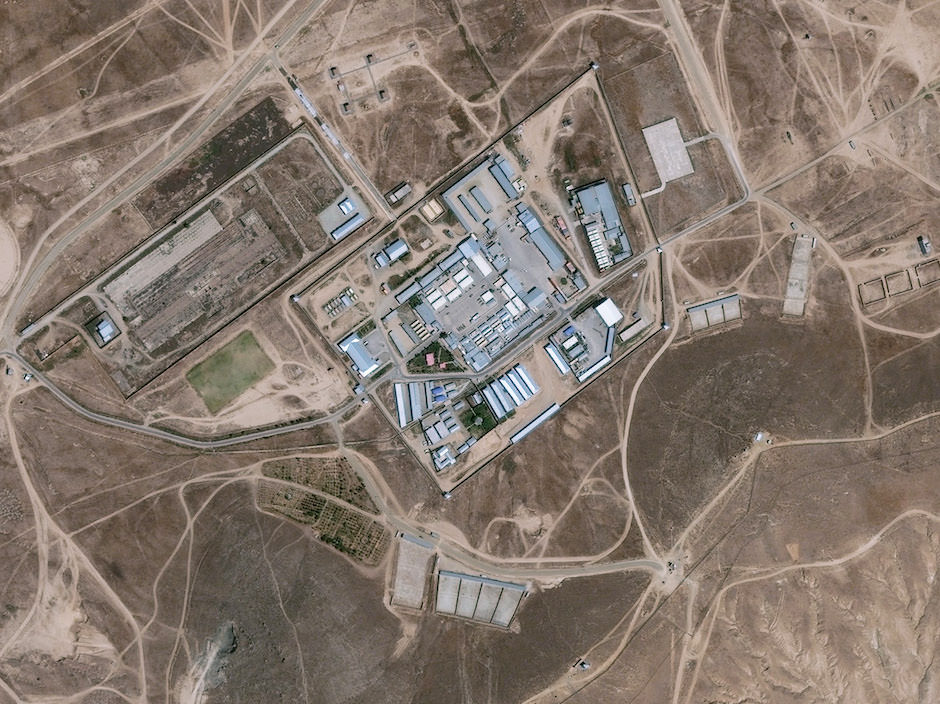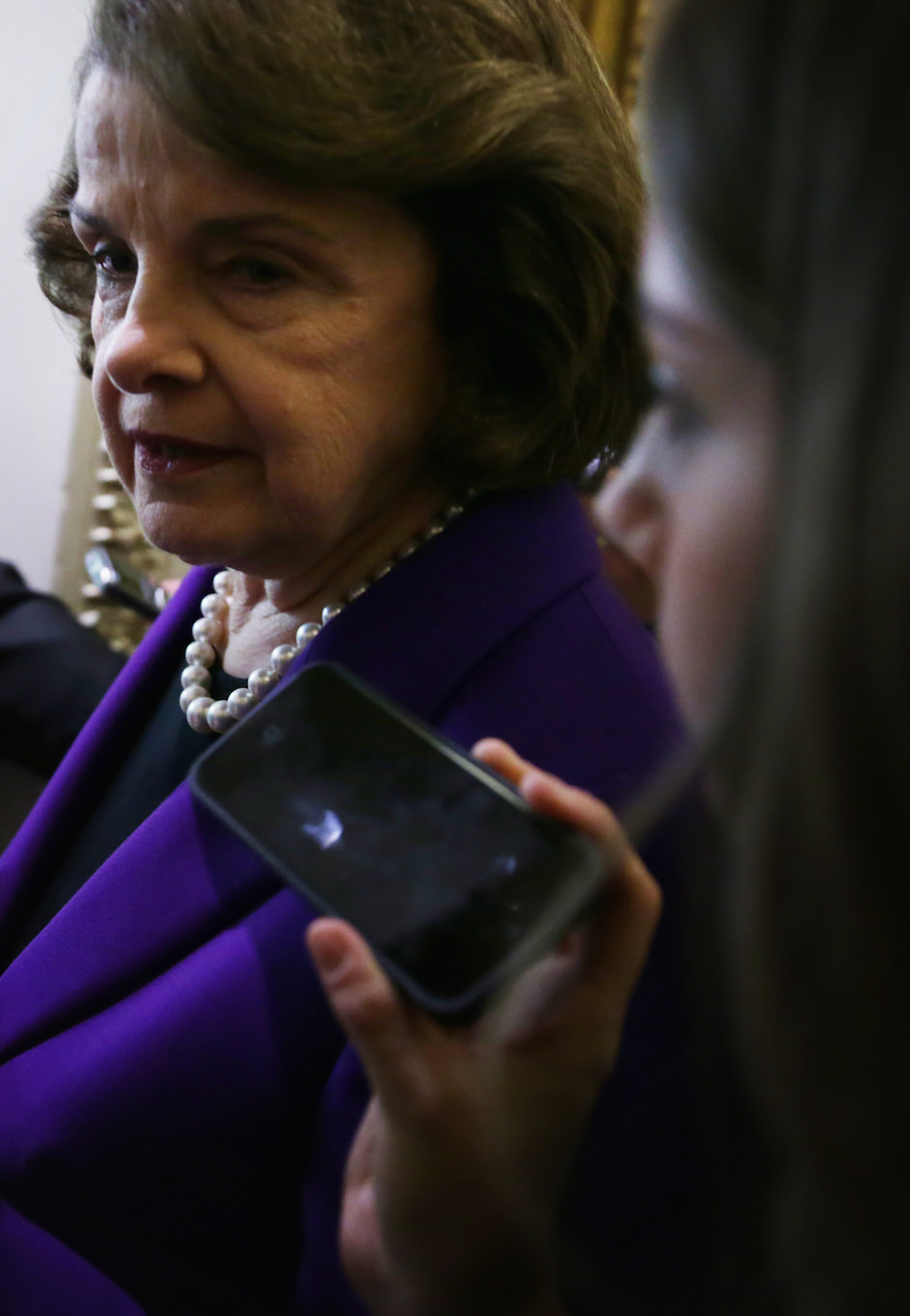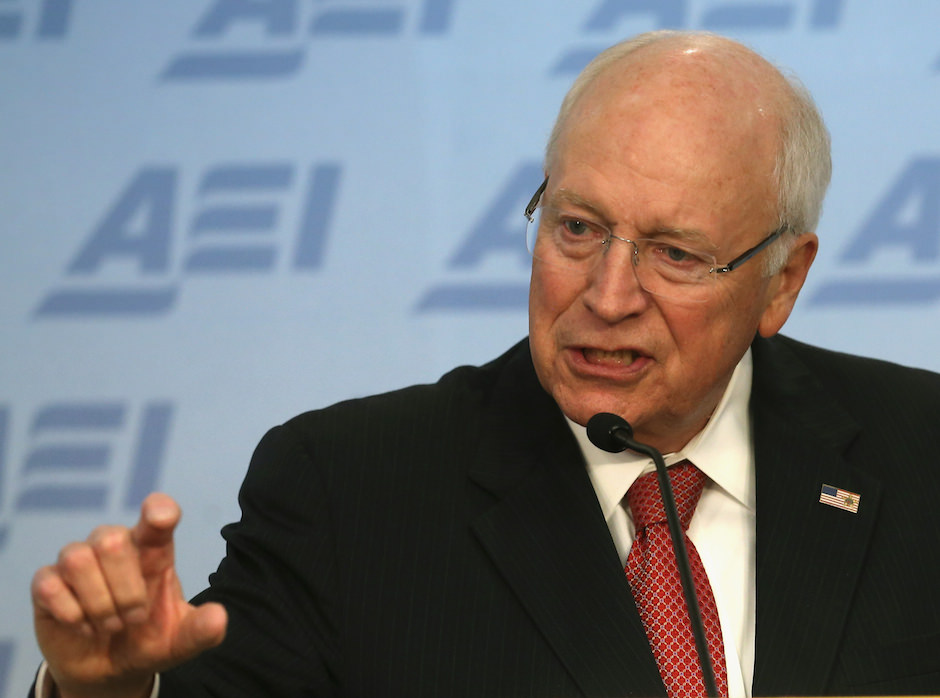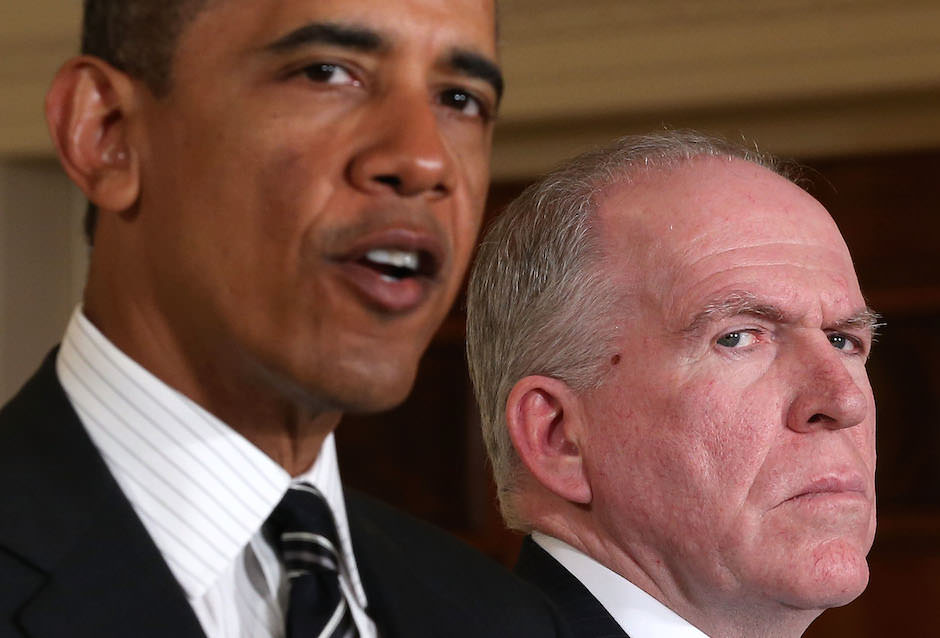New York Review contributor Mark Danner has been writing about the use of torture by the US government since the first years after September 11. Following the release this month of the Senate’s report on the CIA torture program, Hugh Eakin spoke to Danner about some of the most startling findings of the investigation and what it reveals about the continued political debate surrounding the program.
Hugh Eakin: Nearly six years ago, you published the secret report by the International Committee of the Red Cross documenting the CIA’s torture of more than a dozen “high value” detainees. And now we have the Senate’s extensive investigation of the torture program itself. What are some of the most revealing findings of the Senate report?
Mark Danner: There is a lot in the executive summary that we already knew but that is now told in appalling detail that we hadn’t seen before. The relentlessness, day in day out, of these techniques—walling, close-confinement, water-dousing, waterboarding, the newly revealed “rectal rehydration,” and various other disgusting and depraved things— and the totality of their effect when taken together is recounted in numbing, revolting detail. The effect can only be conveyed by a full reading, through page after awful page of this five-hundred-page document, which is after all less than 10 percent of the report itself.
What I think is strictly speaking new is, first, how amateurish the torture program was. It was really amateur hour, beginning with the techniques themselves, which were devised and run by a couple of retired Air Force psychologists who were hired by the CIA and put in charge though they had never conducted an interrogation before. They had no expertise in terrorism or counterterrorism, had never interrogated al-Qaeda members or anyone else for that matter. When it came to actually working with detained terrorists and suspected terrorists they were essentially without any relevant experience. Eventually, the CIA paid them more than $80 million.
The second revelation is the degree to which the CIA claimed great results, and did so mendaciously. Sometimes the attacks they said they had prevented were not serious in the first place. Sometimes the information that actually might have led to averting attacks came not from the enhanced interrogation techniques but from other traditional forms of interrogation or other information entirely. But what the report methodically demonstrates is that the claims about having obtained essential, lifesaving intelligence thanks to these techniques that had been repeated for years and years and years are simply not true. And the case is devastating.
This was a central question the Senate investigation was looking at, wasn’t it? The issue of whether actual intelligence was gained from torture. In essence, “Was it worth it?”
From the beginning the CIA had claimed that these techniques were absolutely essential to saving the lives of tens of thousands, or even hundreds of thousands of people. Those claims have been made by many people and it is another revelation of the report that we see CIA people, notably the lawyers, raising these claims before the program even existed. The lawyers seemed to be thinking, “This is the only way we’re going to get away with this.” There is a quote in the report that people would look more kindly on torture—that is the word used—if it was used to stop imminent attacks. This was the so-called “necessity defense,” which, as the CIA lawyers put it, could be invoked to protect from prosecution “US officials who tortured to obtain information that saved many lives.” This idea was there right from the inception of the program.
So the CIA is already using the word “torture” in the earliest documents the Senate committee looked at?
This is before the program even began, in the weeks after September 11, when CIA lawyers and other officials are talking about using torture. And they use the word.
And there aren’t any detainees at this point.
There really aren’t. This is near the beginning of the Afghanistan campaign, and they didn’t have anyone, certainly not anyone considered “high value.”
Do we get any closer in the report to an original decision by the Bush administration or the CIA to use torture?
No, but we do get a hint that there wasn’t such a moment. You expect that government officials who make the momentous decision to introduce an officially sanctioned torture program in the United States would have a series of serious meetings in which they would analyze the history of interrogation as it has been used by different government agencies. They would consult with allies who have a history of using these and other techniques, about what works and what doesn’t. They would make a general study of what is necessary and what is not. They would consult with legal experts. They would do a number of things.
Advertisement
In this case, as far as we can tell, most of these things were not done. We find a bare minimum of policy discussion. We know the CIA did very little if any research about what would work and wouldn’t. We see no decision tree springing from the felt actual need to do torture in specific cases, beginning with prisoners in hand who are unwilling to talk. Talk of torture itself—the wisps of the discussion, the ghostly mentions of the word—start very early after September 11, when “high value” detainees are generally not available, let alone refusing to talk.
We think of Vice President Dick Cheney as the torture program’s most vocal defender. Is there new insight into his involvement at the beginning? Or of other members of the executive branch?
Cheney was the dominant player in the critical argument about the Geneva Conventions whereby the administration concluded that al-Qaeda and the Taliban would not be considered POW’s according to Geneva standards—and, most important, that Common Article Three, which mandates a minimum level of treatment for all detainees, and this in effect prohibits torture and cruel, inhuman, and degrading treatment, would not apply either. (The Supreme Court later rejected this judgment.) So we already knew the vice-president was very much engaged with the question of whether or not we could do these things.
Where he first comes in in the actual discussion of techniques of interrogation is unclear. Because the Democratic majority on the committee agreed to limit the report to the CIA, we really don’t have definitive answers on who made critical decisions within the executive branch and when they were made. We have an essential report from the Office of Professional Responsibility in the Department of Justice about how torture was approved. We have an extensive and immensely valuable Senate Armed Services Committee report from 2008 about the military’s use of torture. And now we have this report, or rather this executive summary of a report, about the CIA’s use of torture. There are a dozen or so reports about different aspects of Abu Ghraib. But we still have no report on how decisions were made in the executive branch, which is obviously critical.
The White House, including the offices of the president and the vice-president, and the National Security Council—these three vital areas of decision-making still have not been examined. And there’s a reason for that. The Republicans refused to sign on to the Senate investigation unless these areas were put beyond the committee’s ken. The original vote by the Senate Select Committee on Intelligence to pursue the CIA investigation in 2009 was 14-1, and they got the Republicans on board by agreeing not to look at the executive. As it was, most of the Republicans jumped ship and abandoned the report anyway. Now, in their own 167-page summary of their “minority views,” they attack the report for “faulty analysis, serious inaccuracies, and misrepresentations of fact” and argue that the program was essential to gaining vital intelligence that saved many lives. But they present no convincing evidence.
What about the CIA leadership? One figure who seems central in some of the documentation is the CIA’s former acting general counsel, John Rizzo, who I take it was involved in the program from the outset and stayed in that position through 2009.
Rizzo, along with other CIA lawyers, seems to have been the point person on most of these things. And he wasn’t an outside guy. He’d been at the CIA since the late 1970s, in the council’s office. He’d had a career in the CIA. And he also was a main author of the 2001 Memorandum of Notification to the president which gave the CIA broad power to do this—even though it apparently didn’t specify any specific interrogation techniques. (The president, according to the intelligence committee report, was not briefed in detail on the actual techniques until 2006.)
Again, this is right after September 11?
Yes, George W. Bush signed the Memorandum of Notification on September 17, 2001. It’s the key document and it has never been made public. Even though everyone takes it for granted that it was the Office of Legal Counsel in the Department of Justice that permitted the torture program through its so-called “torture memos” that legalized torture the following summer, the original permission seems to have come from the Memorandum of Notification, a presidential document drafted by the CIA itself.
Advertisement
So the CIA is already talking about torture before they have a suspect in mind, and then when they do finally have a suspect, a few months later, and this is Abu Zubaydah, this radical course seems to be projected onto him.
Abu Zubaydah is the crucial case. He was captured in March 2002 in Pakistan. He had been badly wounded and had to be hospitalized, but very soon he was interrogated by two experienced FBI interrogators using traditional “rapport-building” techniques and he did yield up a good deal of information. In the view of the FBI interrogators he was compliant and cooperative, and the information he gave during those initial weeks of talking to the FBI—that Khalid Sheikh Mohammed (aka “Mukhtar”) was the mastermind behind the September 11 attacks, and that a man revealed to be Jose Padilla was plotting to become a so-called dirty bomber—is the very information that is cited by the CIA to bolster their claim that they got information through torture from Abu Zubaydah. The report confirms what the FBI interrogators had long claimed: that Abu Zubaydah revealed both these pieces of intelligence during their initial interrogation, conducted, without torture, by using traditional methods.
The FBI interrogators were fluent Arabic speakers and deeply knowledgeable about al-Qaeda. And they got Abu Zubaydah to talk through traditional interrogation methods?
These were the standard FBI protocols—excluding torture—that had long been used, but the FBI interrogator Ali Soufan was not only experienced with al-Qaeda, he was by many accounts the best interrogator in the government. He had interrogated al-Qaeda suspects in the USS Cole bombing.
Abu Zubaydah had been captured by the CIA. How was it that the FBI interrogated him first?
It’s interesting. He was the CIA’s prisoner. He was taken to a black site in Thailand run by the CIA. Initially, the CIA’s Counterterrorism Center didn’t send anyone to interrogate him because, according to Soufan, they didn’t believe it was Abu Zubaydah. So there was this initial delay, which allowed the FBI to start on the job of the interrogation.
Only when the CIA realized it was really Abu Zubaydah did they start to send their own people. And among these are the former military psychologists James Mitchell and Bruce Jessen, who, now working as CIA contractors, and actually conducted that interrogation, and were eventually paid $81 million for their efforts. There was this period that they overlapped with the FBI, and Ali Soufan, who recognized them as rank amateurs, objected strenuously. The FBI eventually pulled out of the interrogation entirely. And this is another reason the program was such a disaster. Because of it you have the people in the government who know the most about interrogating al-Qaeda members not even taking part.
And when the decision to start using torture is made, the Bush administration is on some level directly involved in the interrogation of Abu Zubaydah?
Right after they captured Abu Zubaydah, Bush talked about him publicly, at a fundraiser in Greenwich, Connecticut. And already in Newsweek, in April 2002, there was an article about whether Abu Zubaydah was cooperating or not. And though they are all blind quotes you can pretty much pick out which are from the CIA and which from the FBI. There’s this amazing bureaucratic tug of war going on in the press. Here’s this guy at this black site in Thailand, and meanwhile, both bureaucracies are fighting it out about whether he should be tortured in Newsweek. It still is astonishing. He’s there, in the hospital, and officials from the two agencies are being quoted, the FBI saying they’re getting a lot from the prisoner and the CIA saying they’re not getting anything.
But what is fascinating is what seems to have led the CIA to resort to this improvised, amateurish program. It was the utterly mistaken conviction that Abu Zubaydah was withholding information about attacks that would have killed thousands of people. So here we come back to the same theme of actionable intelligence, needing to use these techniques to find out about plots that would threaten thousands of people. So we are back to the raison d’être of the program itself.
It sounds like a tautology. They have to torture Abu Zubaydah so that he will reveal a “ticking time bomb,” and they need that revelation to justify the use of torture. And the use of torture is based on the fact that he hasn’t revealed any such plot.
All came from the conviction that Abu Zubaydah has knowledge of plots to kill thousands of people, and that conviction stems from an absolutely mistaken idea of who Abu Zubaydah is. The CIA officers are convinced that Abu Zubaydah is the third or fourth man in al-Qaeda, which he is not; they are convinced he is this very important guy that would have this information most vital information on current planning. But he’s not. He’s not even a member of al-Qaeda. In fact, he was something like a travel agent for al-Qaeda, which meant of course he had a lot of useful information. But because the CIA was convinced that he was at the pinnacle of the organization, they thought that even though he seemed to be cooperating with these FBI interrogators, he was actively withholding what they really needed: information about an impending “threat.”
Eventually, as I’ve described in The New York Review, he was put under forced sleep deprivation for 180 hours and waterboarded eighty-three times. It’s extraordinary that the last two times—the eighty-second and eighty-third waterboardings—were imposed on the direct orders of officials at CIA headquarters, over the strenuous objections of the interrogators who were performing them. The interrogators judged Abu Zubaydah was completely compliant: he just had nothing to give up.
It’s an epistemological paradox: How do you prove what you don’t know? And from this open question comes this anxiety-ridden conviction that he must know, he must know, he must know. So even though the interrogators are saying he’s compliant, he’s telling us everything he knows—even though the waterboarding is nearly killing him, rendering him “completely non-responsive,” as the report says—officials at headquarters was saying he has to be waterboarded again, and again, because he still hadn’t given up information about the attacks they were convinced had to be coming. They kept pushing from the other side of the world for more suffering and more torture.
And finally, grudgingly, after the eighty-second and eighty-third waterboardings, they came to the conclusion that Abu Zubaydah didn’t have that information. So when they judged the use of enhanced interrogation techniques on Abu Zubaydah a “success,” what that really meant was that the use of those techniques, in this brutal, appalling extended fashion, had let them prove, to their satisfaction, that he didn’t know what they had been convinced that he did know. It had nothing to do with him giving more information as he was waterboarded. The use of these techniques let them alleviate their own anxiety. And their anxiety was based on complete misinformation. Complete ignorance about who this man actually was.
You see this in this report again and again. You see that CIA headquarters is absolutely convinced that these people know about pending attacks. And what the torture proves is that they don’t know it. And mostly the reason for this is that information about current attacks was very, very tightly held. That’s the way terrorist organizations work. They’re cellular structures, with information distributed on a need-to-know basis. And unless you manage to capture the person about to conduct the attack, or Osama bin Laden, you are going to have a very hard time finding people who know about current attacks.
There are moments of clarity in the report where CIA interrogators are conceding, internally, that we know astonishingly little about who these guys are. And yet this huge machinery of torture was put into place and defended at all costs.
We translated our ignorance into their pain. That is the story the Senate report tells. Our ignorance, our anxiety, our guilt, into their pain. It’s one reason why I think—looking much more broadly at policy—it was a grave error for President Bush not to replace people in the CIA after September 11. Because you had an agency that out of its guilt about having failed to prevent those attacks—guilt that extended from the director down—could think only of preventing another attack. And while preventing another attack was extremely important, it wasn’t the only thing. And I think here their hysteria caused them to operate in an irrational and counterproductive way.
For all the talk of getting urgent information out of Abu Zubayah, the report suggests that the CIA didn’t actually begin interrogating him immediately when it took over from the FBI.
There was this delay of forty-seven days, it was bizarre. There was the struggle with the FBI, when the CIA comes in and stops the FBI interrogations. And the report quotes the FBI interrogators as saying to FBI headquarters, “we tried politely to suggest that valuable time was passing where we could attempt to solicit threat information.” But then, after the CIA takes over and transfers him from the hospital back to the black site in Thailand, he is left in isolation for seven weeks. The real CIA interrogation didn’t begin until August 4, 2002.
Ali Soufan, in a recent piece in The Guardian, talks about how insane it was that they were talking about a ticking bomb, and then just left him alone, uninterrogated for forty-seven days, even after the FBI had gotten these other bits of information. It may have been they were preparing what they wanted to do. It may have been they were waiting for the critical “torture memos” from the Office of Legal Counsel at the Department of Justice. The report doesn’t really explain it.
The executive summary, among other things, is the story of an agency persistently shooting itself in the foot. Persistently not getting the information it should have because of the use of these techniques. These techniques, we should remember, were not only depraved, immoral, illegal; they were counterproductive. Put another way, the United States would have been in a better position to know about al-Qaeda and to prevent future attacks if these techniques had not been used. This is an amazing statement but I believe it is the only conclusion that can be drawn from a fair reading of the text.
Does the Senate report change how we think about the torture program?
From the beginning, there’s been the story, and then there’s been the revelations about the story. What was going on has been in front of the country almost from the beginning. In December 2002, The Washington Post ran on its front page a long article on the “stress and duress” techniques that the Americans were using in Afghanistan; a few months later The New York Times fronted a similar long report. These were followed in the spring of 2004 by the extensive revelations about Abu Ghraib, and then leaks about torture, including the torture memos, one of which was leaked to The Wall Street Journal in June 2004. The New York Times wrote about waterboarding in a piece in May 2005. That year also ABC News broadcast a list of the techniques being used at the black sites, which had been revealed by Dana Priest in The Washington Post and Jane Mayer in The New Yorker. And we got another series of revelations during the spring of 2009, after Obama took office. The extent of the abuses was clearly stated in the Red Cross report, which we disclosed in The New York Review, and partly as a result of that publication, government officials said, came the decision to release the torture memos from the Office of Legal Counsel. And again and again, we have this reaction on the part of the public, “Oh my God! This is shocking.” And now we have it again.
But during this time—since 2005 really—the public debate about torture has been continuously developing toward a partisan divide. One major party has a clear position on torture: it is for it. We see a grim flowering of this now with the publication of this executive summary of the Senate report on torture. Republicans have come out in a very partisan way in defense of the CIA, and actually in favor of these techniques. One of the interesting things about the reaction to the report is that those who have come out to denounce it have done so in the vaguest terms. They haven’t engaged with it specifically. You simply have a persistent effort to make the claims for torture’s vital efficacy all over again. The worst example of this is Dick Cheney, who has essentially said, and I quote, “the report is full of crap.” He hasn’t bothered to read the report and doesn’t feel it necessary to engage in any of the specific evidence of CIA torture and the devastating conclusions about it.
Some Democrats have come out against the CIA actions. The most aggressive include Senate Intelligence Committee chairman Dianne Feinstein, Senator Mark Udall, and Senator Ron Wyden. But many other Democrats have been quiet, including, I should add, the most important Democrat, Barack Obama, who has been very little in evidence. Until this week, he has essentially been AWOL. Absent Without Leave. He hasn’t come out strongly endorsing the report. He has been very vague when talking about the report. He has said simply, “this is not who we are.” That is the persistent quote from him, a phrase I find absolutely maddening, because, What does it mean? I guess it means: “This is not what we would do, if we were who we said we are.” But we seem not to be who we said we are because this is what we have done. If what he means is, the CIA shouldn’t have done this because it is against what Americans believe, he should say that clearly and definitively. This is, after all, or has been, his public position; that he refuses to embrace it now, apparently out of fear of antagonizing the CIA, is shameful. And it is sad proof of how dependent the country now is on the CIA, from their drones to their paramilitary assassination squads. From having taken its place as the lead agency in torturing detainees the CIA has become the lead agency in assassinating suspected terrorists, and that, thirteen years after September 11, is the reality of the “war on terror.” The president needs them.
Indeed this quote—“This is not who we are”—in all of its ambiguity is a fine summary of the president’s position. That and his earlier statement that “we need to be looking forward and not backward.” When any kind of accountability—investigation, prosecution, all such activities—are the heart of looking backward. And he says we need to be looking forward.
The question remains, what kind of accountability now is possible? Some have noted that the Senate Select Committee did not include specific recommendations with the report.
There seems to be an assumption that the recommendations are self-evident—at least the major one, which is that we should never do this again. Which the administration has, however squeamishly, also said. But the report should have had very clear recommendations. And also a summary that said that one of the main findings of the investigation was not simply the pain imposed on individuals, or the law-breaking, or the moral reprehensibleness of it. It was that there was a fundamental corruption of governance, in which the CIA became this body that persistently lied, not only to Congress, which was supposed to oversee it, but to the executive branch to which it ostensibly reported.
And even to the Office of Legal Counsel in the Justice Department. The OLC, which for so long in the public perception has been understood as a central instrument in the torture program. The report shows that the lawyers in that office who drafted the “torture” memos were themselves sort of duped too, is that correct?
Yes. And indeed that would be an obvious avenue for investigation and possible prosecution, though the administration shows no interest in pursuing it. The CIA was actually misleading the Department of Justice. The report shows that the information given to the DOJ by the CIA in order for the DOJ to make its determination in the summer of 2002 that these techniques were legal—was misleading and wrong; notably, that the techniques were not applied as described but much more brutally, especially waterboarding. John Yoo, the author of the original torture memo, already told the Office of Professional Responsibility during their investigation that if waterboarding was performed as it was described in the press he would not have judged it legal. And the report shows that indeed the CIA performed the technique in a much more brutal manner than it admitted to the Department of Justice lawyers.
This kind of corruption through mendacity has continued, and we see it clearly now, in this cheerleading society organized by the CIA, consisting mostly of ex-officials, who have come out publicly not only to defend the agency but also to defend torture itself. The CIA is not supposed to be lobbying for torture in the public realm. That’s not what the billions of dollars the taxpayers give it are supposed to be spent on.
We’re in this surrealistic world, in which, twelve years after these decisions to use torture have secretly been made, we’re seeing a public effort at disinformation spreading throughout the country, through all the media outlets, cheerleading for torture. It’s quite an astonishing thing: torture, which used to be illegal, which used to be anathema, has now become a policy choice.
A choice that even now, after the report, some are still arguing for.
Exactly. In 2005, when the program, still secret, was beginning to wind down, a major poll found that 38 percent of the public agreed that torture could and should be used on certain occasions; now that number, depending on the poll, has risen to about 50 percent. This means that the original argument, in defense of “enhanced interrogation techniques” or—in President Bush’s phrase—the “alternative set of procedures,” has led us down an increasingly dark dead end. For what is the conclusion here? If torture was such a good idea, if it was so necessary, if it saved so many thousands of lives when nothing else could, then why did we stop doing it? Why aren’t we doing it right now? And I think on the Republican side, some arguments lately have come very close to asserting this. So we have torture as a policy choice whose popularity is growing.
It’s a deeply perverse situation that goes beyond the original choice to use torture itself. It’s also a result of the ambivalent way this choice was treated by Barack Obama and his administration. Though President Obama formally abolished torture with an executive order on his second day in office, his refusal to take other steps—to approve investigations, prosecutions, or at least a bipartisan commission—means that only his signature on that executive order stands between us and the possibility of more torture in the future. If this issue is raised in the Republican primaries in 2016, I’d expect that most politicians on that stage will declare themselves firmly in favor of “enhanced interrogation techniques.” We may not torture now, but because torture has become a recognized policy choice, it is perfectly conceivable that our political masters, depending on who they are, might well decide to do so in the future. This is where we find ourselves, a dozen years after Abu Zubaydah first was strapped down to that waterboard.








